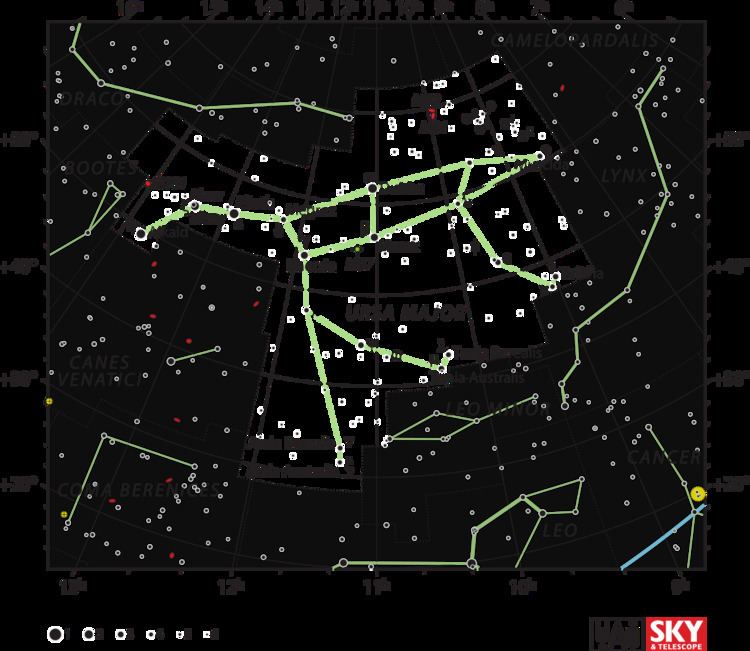Magnitude 4.62 Apparent magnitude (V) 4.62 | ||
 | ||
Similar Nu Ursae Majoris, Mu Ursae Majoris, Psi Ursae Majoris | ||
4 Ursae Majoris (sometimes abbreviated 4 Uma) is the Flamsteed designation of a star in the northern circumpolar constellation of Ursa Major. It also bears the Bayer designation of Pi² Ursae Majoris (Pi² UMa, π² Ursae Majoris, π² UMa) and is traditionally named Muscida. With an apparent visual magnitude of +4.6, this star is visible from suburban or darker skies based upon the Bortle Dark-Sky Scale. From parallax measurements made during the Hipparcos mission, this star is at a distance of 256 light-years (78 parsecs) from Earth. As of 2011, one extrasolar planet has been confirmed to be orbiting the star.
Contents
Properties
This star has a stellar classification of K2 III, indicating that, at an estimated age of around four billion years, it is an evolved star that has reached the giant stage. It has a mass about 1.2 times larger than the Sun, but has expanded to 18 times the Sun's girth. The effective temperature of the star's outer atmosphere is 4,415 K. This heat gives it the cool, orange-hued glow of a K-type star.
Pi² Ursae Majoris is a member of the Milky Way galaxy's thin disk population. It is following an orbit through the galaxy with an eccentricity of 0.10, which carries it as close to the Galactic Center as 27.7 kly (8.5 kpc) and as far as 34.1 kly (10.5 kpc). The inclination of this orbit lies close to the galactic plane, so it departs this plane by no more than 260 light-years (80 parsecs).
Planetary system
Based upon observed radial velocity changes in the star, in 2007 the presence of a planetary companion was announced. The planet, designated 4 Ursae Majoris b, is at least seven times more massive than Jupiter. Its orbit is eccentric, orbiting 4 Ursae Majoris at 87% the distance from Sun to Earth. Compared to the Sun, this star has a lower abundance of elements other than hydrogen and helium, what astronomers term the star's metallicity. This is curious, because most main sequence stars with planets tend to have a higher abundance of metals.
